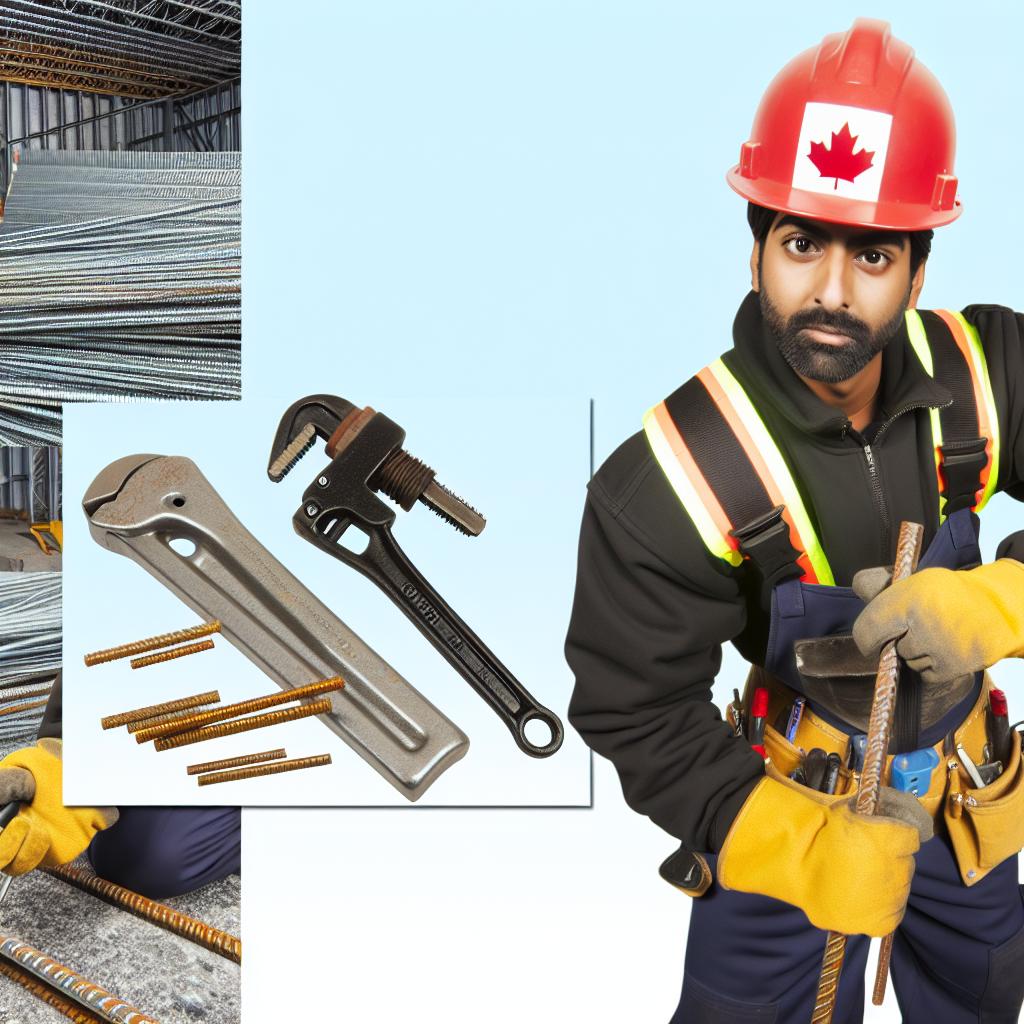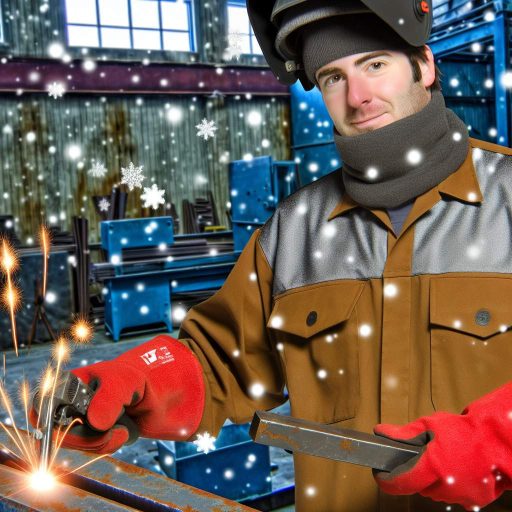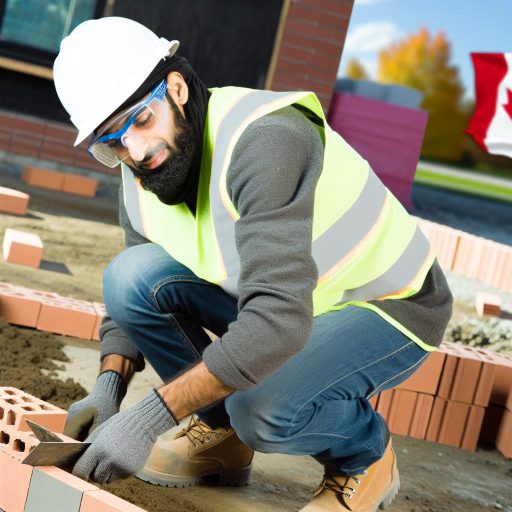Introduction to Ironworking: A Brief Overview
Ironworking is a vital skill in construction and manufacturing.
This trade involves shaping and assembling metal structures.
Moreover, ironworkers play a crucial role in building safe infrastructures.
They work on various projects, including bridges, buildings, and towers.
Safety is a top priority in ironworking practices.
Workers must understand how to use equipment and follow safety regulations.
Additionally, ironworking requires physical strength and endurance.
Good teamwork and communication are essential on the job site.
Learning ironworking can be challenging but rewarding.
With dedication, anyone can master this craft and thrive in the industry.
As the demand for skilled ironworkers grows, opportunities abound.
Understanding the tools and skills needed is the first step.
Essential Safety Skills for Ironworkers
Understanding Safety Protocols
Safety protocols are crucial in ironworking.
They help prevent workplace injuries and accidents.
Begin by familiarizing yourself with these protocols.
This knowledge is essential for a productive career.
Wearing Personal Protective Equipment
Wearing appropriate personal protective equipment (PPE) is vital.
PPE includes helmets, gloves, and steel-toed boots.
These items provide necessary protection against dangers.
Always inspect your gear before starting work.
Replace any damaged equipment immediately.
Proper Lifting Techniques
Learn proper lifting techniques to avoid injuries.
Use your legs instead of your back for lifting heavy objects.
Keep the load close to your body while lifting.
Always ask for help if a load is too heavy.
Unlock Your Career Potential
Visualize a clear path to success with our tailored Career Consulting service. Personalized insights in just 1-3 days.
Get StartedUnderstanding Equipment Operation
Understanding how to operate equipment is essential.
This includes cranes, forklifts, and welding machines.
Only operate equipment you are trained to use.
Regularly review equipment safety manuals for best practices.
Emergency Response Training
Emergency response training is crucial for ironworkers.
It prepares you to react effectively in crises.
Learn the location of first aid kits and emergency exits.
Participate in drills to enhance your response skills.
Regular Safety Meetings
Participate in regular safety meetings with your team.
These meetings promote a culture of safety at work.
Share experiences and learn from each other.
Discuss any safety concerns or incidents that occurred.
This practice fosters open communication among workers.
Staying Informed on Safety Regulations
Stay informed about local and national safety regulations.
Regulations may change, so regular review is necessary.
Subscribe to updates from relevant safety organizations.
Attend workshops for new safety techniques and updates.
Maintaining a Safe Work Environment
A clean work environment is essential to safety.
Keep your workspace organized and free of hazards.
Dispose of waste materials responsibly and immediately.
Encourage co-workers to maintain cleanliness as well.
Report any unsafe conditions to your supervisor.
Basic Welding Techniques Every Ironworker Must Know
Understanding Welding Basics
Welding is a vital skill for every ironworker.
It involves joining metal pieces using heat and pressure.
Different processes exist, each suited to specific applications.
Types of Welding Processes
Begin with learning electric arc welding.
It is widely used and relatively easy to master.
MIG welding allows for quick and efficient metal joining.
TIG welding provides precision and control over the weld.
Safety Precautions
Always prioritize safety when welding.
Wear protective gear including gloves and helmets.
Ensure proper ventilation in your workspace.
Additionally, maintain a clean work area free from flammable materials.
Setting Up Your Equipment
Inspect your welding machine before starting.
Check cables and connections for any damage.
Choosing the right electrode type is crucial for successful welding.
Follow the manufacturer’s guidelines for settings.
Practicing Your Technique
Begin practicing on scrap metal to build confidence.
Focus on maintaining a steady hand and consistent speed.
Vary your angles and distances for better control.
Continually evaluate your welds for quality improvements.
Delve into the Subject: How Roofers Ensure Quality in Large-Scale Projects
Reading and Interpreting Blueprints and Technical Drawings
The Importance of Blueprints
Blueprints form the foundation of any construction project.
They provide detailed information about dimensions and materials.
Understanding blueprints ensures safety and accuracy on-site.
Key Components of Blueprints
Blueprints consist of several key components.
First, legends explain the symbols used throughout the document.
Next, notes provide crucial details for the builders.
Dimensions indicate the size and scale of structures.
Finally, section views show internal details and configurations.
Techniques for Reading Blueprints
Start with a thorough review of the entire blueprint.
Identify the title block, which contains essential project information.
Next, familiarize yourself with the symbols and abbreviations used.
Then, examine the floor plans to understand the layout.
Also, pay attention to elevation drawings for a vertical perspective.
Practical Applications
In the field, knowing how to read blueprints is crucial.
It helps ironworkers accurately interpret project specifications.
Furthermore, accurate interpretation prevents costly mistakes.
Lastly, this skill enhances communication among team members.
Delve into the Subject: A Day in the Life of a Skilled Upholsterer
Understanding Different Types of Iron and Steel Materials
Basics of Iron and Steel
Iron and steel play a crucial role in construction and manufacturing.
Their properties determine their applications and suitability for various tasks.
Understanding these materials helps ironworkers make informed decisions.
Types of Iron
Cast iron is a popular choice for heavy-duty applications.
It has a higher carbon content, making it brittle yet strong.
Wrought iron is more malleable and easier to work with.
It is ideal for intricate designs and decorative work.
Types of Steel
Steel is an alloy of iron, enhanced with carbon and other elements.
Carbon steel is the most common type used in construction.
It offers a balance of strength and flexibility.
Alloy steel contains additional elements to improve specific properties.
Stainless Steel
Stainless steel is renowned for its corrosion resistance.
This makes it suitable for outdoor structures and environments with moisture.
It is often employed in high-quality architectural applications.
Choosing the Right Material
Selecting the correct type of iron or steel is vital for project success.
Consider factors such as strength, weight, and environmental conditions.
Consulting with experienced professionals assists in making the best choice.
See Related Content: Steps to Becoming a Successful Ironworker in Canada
Key Hand Tools and Their Uses in Ironworking
Wrenches
Wrenches are essential for tightening and loosening bolts.
Adjustable wrenches provide versatility for different sizes.
Specialized wrenches help with specific tasks in ironworking.
Clamps
Clamps secure metal pieces during fabrication.
They prevent movement and ensure precise alignment.
Different styles cater to various projects and materials.
Pliers
Pliers grasp and manipulate metal components with ease.
They come in various types, including needle-nose and locking pliers.
Each type serves unique functions in ironworking tasks.
Hammers
Hammers drive nails and shape metal components.
The size and weight of the hammer depend on the job.
Ball-peen hammers are common for metalworking applications.
Measuring Tools
Measuring tools ensure accuracy in every project.
Common tools include tape measures and square rules.
Precision is crucial for effective ironworking processes.
Saws
Saws cut through metal and other materials efficiently.
Types include hacksaws and reciprocating saws.
Choosing the right saw depends on the material thickness.
Safety Equipment
Safety equipment protects ironworkers during tasks.
Helmets, gloves, and goggles are essential for safety.
Investing in quality gear minimizes the risk of injury.
Uncover the Details: Understanding the Art and Craft of Upholstery

Importance of Physical Fitness and Stamina in Ironworking
Ironworking demands exceptional physical fitness and stamina.
These elements significantly impact the quality of work produced.
Additionally, they enhance safety on the job site.
Benefits of Physical Fitness
Physical fitness improves overall performance in ironworking tasks.
Strong muscles and cardiovascular health allow workers to handle heavy materials.
Furthermore, fitness levels influence endurance during long hours of work.
As a result, physically fit ironworkers can complete projects efficiently.
The Role of Stamina
Stamina is crucial for maintaining energy throughout the workday.
It helps ironworkers to stay focused and alert during tasks.
High stamina reduces fatigue, which can lead to costly mistakes.
Additionally, it allows workers to meet tight deadlines effectively.
Strategies to Improve Physical Fitness and Stamina
Regular exercise routines can enhance strength and endurance.
- Incorporate cardiovascular workouts like running or cycling.
- Engage in strength training to build muscle.
- Practice flexibility exercises such as yoga or stretching.
Nutrition also plays a vital role in physical performance.
Consuming a balanced diet helps maintain energy levels.
Staying hydrated throughout the day ensures optimal function.
Additionally, adequate rest and recovery are essential for rebuilding muscles.
Advanced Tools: Cranes, Forklifts, and Their Operations
Understanding Cranes
Cranes are essential for lifting and moving heavy materials.
They come in various types, each designed for specific tasks.
Construction sites widely use tower cranes for vertical lifts.
Mobile cranes provide flexibility and can be transported easily.
Operators must understand load capacities to prevent accidents.
Types of Cranes
- Tower Cranes
- Mobile Cranes
- Overhead Cranes
- Rough Terrain Cranes
Forklifts in Construction
Forklifts are crucial for transporting materials on-site.
They are versatile machines that improve efficiency in operations.
Operators must be trained to use forklifts safely.
Forklift Types and Uses
- Pallet Jacks
- Standard Forklifts
- Rough Terrain Forklifts
- Order Pickers
Cranes and Forklift Operations
Both cranes and forklifts require careful operation and coordination.
Safety protocols must be followed to ensure worker safety.
Regular maintenance is key to keeping these machines in top condition.
Understanding site layout helps in planning efficient operations.
Communication among team members enhances safety and productivity.
Continuing Education and Skills Development
The Importance of Ongoing Training
Continuous training is essential for every ironworker.
It ensures you remain competitive in the industry.
Moreover, ongoing education enhances safety awareness.
It significantly reduces workplace accidents.
Exploring Certifications and Specializations
Certifications can boost your credibility as an ironworker.
Programs such as OSHA offer valuable safety training.
Specializations in welding or rigging increase your employability.
These can lead to higher wages and more job opportunities.
Utilizing Online Resources and Workshops
Online courses provide flexibility for busy schedules.
They allow you to learn at your own pace.
Workshops offer hands-on experience with new tools.
Networking at these events can lead to job prospects.
The Role of Mentorship in Skill Development
Finding a mentor can greatly enhance your learning curve.
A mentor provides guidance tailored to your career goals.
They can share invaluable industry insights and experience.
Additionally, mentorship fosters professional connections.
Staying Updated with Industry Trends
Being aware of industry changes is crucial.
Subscribe to trade publications and attend trade shows.
Engaging with professional networks keeps you informed.
This knowledge can prepare you for new challenges.
Additional Resources
What is in your opinion the easiest trade jobs? – Quora
I am interested in taking carpentry as a profession. What are the best …




